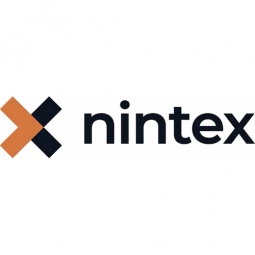Applicable Industries
- Electronics
- Finance & Insurance
Applicable Functions
- Quality Assurance
- Sales & Marketing
Use Cases
- Usage-Based Insurance
- Visual Quality Detection
Services
- Cloud Planning, Design & Implementation Services
- Testing & Certification
About The Customer
Knight Insurance Group is a regional insurance agency with a history spanning 150 years. The company provides home, auto, and business insurance to individuals and companies across the Midwest. The roots of the company extend back to 1859 when the Shawen, Stieg & Whitaker Agency incorporated in Toledo, Ohio. Over the years, the company has grown through more than twenty acquisitions to become the Knight Insurance Group of today. Despite its growth and evolution, the company’s commitment to superior customer service has remained steadfast, providing quality insurance products and financial services to individuals and businesses of all sizes.
The Challenge
Knight Insurance Group, a regional insurance agency, was grappling with the challenge of manually processing client paperwork across all its locations. This traditional method was not only time-consuming but also increased the likelihood of customer fall-off due to the lengthy process. On average, it would take new clients two weeks to fill out and return applications. This situation was far from ideal as it kept administration times higher than the company desired. The company recognized the need to digitize all administration to streamline the paperwork process and improve customer experience.
The Solution
In a bid to digitize the paperwork process, Knight Insurance Group implemented Nintex AssureSign electronic signature. This solution was deployed via the cloud and integrated with the company’s Applied Systems’ TAM software. The selection of Nintex AssureSign was influenced by its out-of-the-box integration with TAM and its full-service customer support. The deployment of the eSignature solution was swift, with the agency’s eSignature capabilities fully extended across all locations in just nine days. This digital transformation initiative aimed to make the process of submitting paperwork easier for customers, eliminating the need for them to print, scan, or fax documents.
Operational Impact
Quantitative Benefit

Case Study missing?
Start adding your own!
Register with your work email and create a new case study profile for your business.
Related Case Studies.

Case Study
Remote Temperature Monitoring of Perishable Goods Saves Money
RMONI was facing temperature monitoring challenges in a cold chain business. A cold chain must be established and maintained to ensure goods have been properly refrigerated during every step of the process, making temperature monitoring a critical business function. Manual registration practice can be very costly, labor intensive and prone to mistakes.

Case Study
Predictive maintenance in Schneider Electric
Schneider Electric Le Vaudreuil factory in France is recognized by the World Economic Forum as one of the world’s top nine most advanced “lighthouse” sites, applying Fourth Industrial Revolution technologies at large scale. It was experiencing machine-health and unplanned downtime issues on a critical machine within their manufacturing process. They were looking for a solution that could easily leverage existing machine data feeds, be used by machine operators without requiring complex setup or extensive training, and with a fast return on investment.

Case Study
Cloud Solution for Energy Management Platform-Schneider Electric
Schneider Electric required a cloud solution for its energy management platform to manage high computational operations, which were essential for catering to client requirements. As the business involves storage and analysis of huge amounts of data, the company also needed a convenient and scalable storage solution to facilitate operations efficiently.

Case Study
Leveraging the IoT to Gain a Competitive Edge in International Competition
Many large manufacturers in and outside Japan are competing for larger market share in the same space, expecting a growing demand for projectors in the areas of entertainment, which requires glamor and strong visual performance as well as digital signage that can attract people’s attention. “It is becoming more and more difficult to differentiate ourselves with stand-alone hardware products,” says Kazuyuki Kitagawa, Director of Service & Support at Panasonic AVC Networks. “In order for Panasonic to grow market share and overall business, it is essential for us to develop solutions that deliver significant added value.” Panasonic believes projection failure and quality deterioration should never happen. This is what and has driven them to make their projectors IoT-enabled. More specifically, Panasonic has developed a system that collects data from projectors, visualizes detailed operational statuses, and predicts issues and address them before failure occurs. Their projectors are embedded with a variety of sensors that measure power supply, voltage, video input/ output signals, intake/exhaust air temperatures, cooling fan operations, and light bulb operating time. These sensors have been used to make the projector more intelligent, automatically suspending operation when the temperature rises excessively, and automatically switching light bulbs. Although this was a great first step, Panasonic projectors were still not equipped with any capability to send the data over a network.









